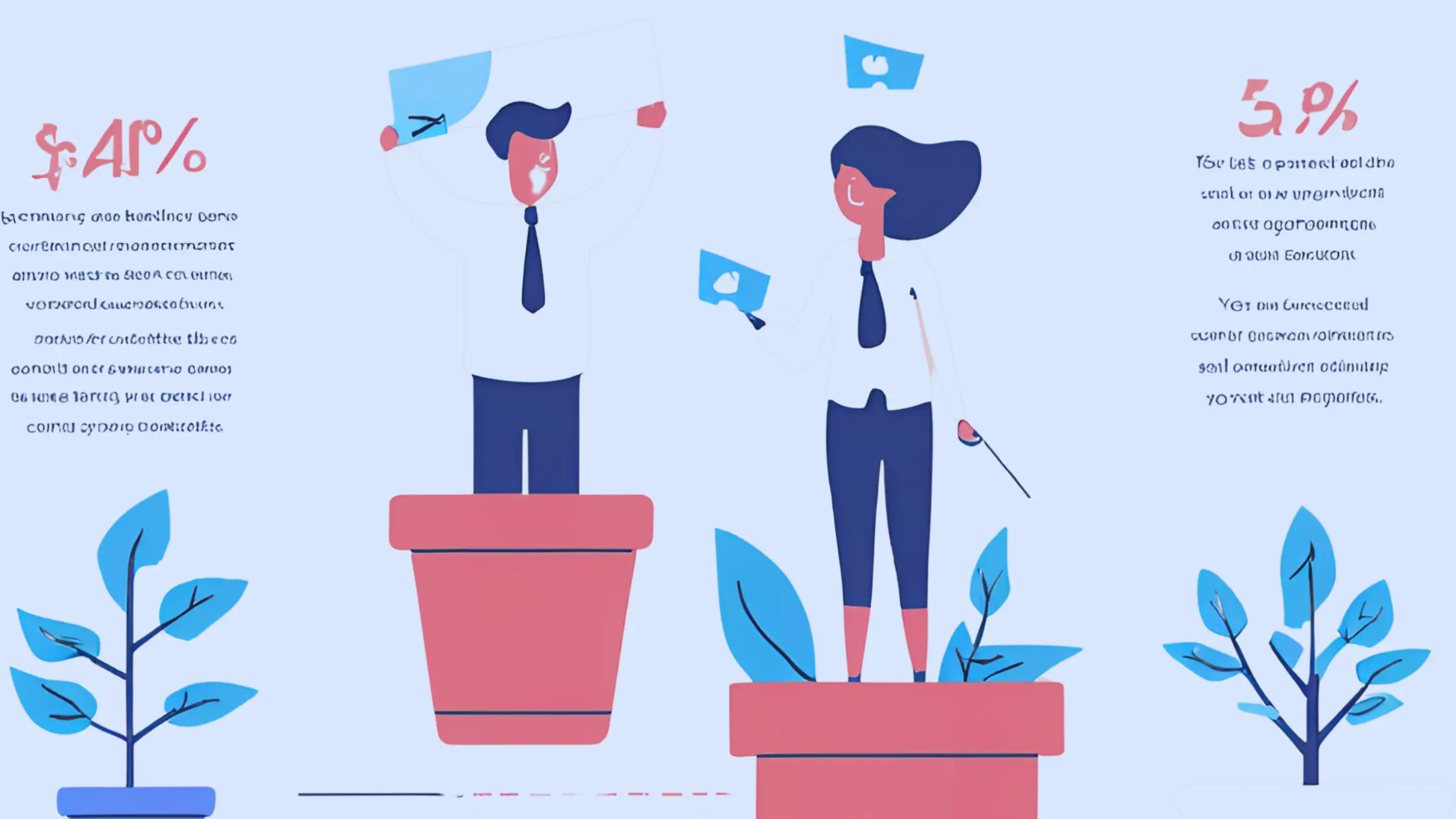Financial Forecasting: What It Is and Why It’s Crucial for Small Businesses

Did you know that 30% of small businesses close within their first two years?
One of the primary reasons for these closures is running out of cash. While some business ideas may not succeed, many failures could have been avoided with better planning — such as securing funding, leveraging financial forecasting, or making critical adjustments to overcome challenges.
So, how do you take control of your finances and plan ahead to avoid unexpected cash flow issues? The answer lies in financial forecasting.
What is Financial Forecasting?
Financial forecasting involves making informed projections about your business’s future. Think of it like a weather forecast. When you check your weather app, you’re looking at predictions based on past and current meteorological data. Similarly, financial forecasting predicts sales, expenses, profits, cash flow, and other metrics using past performance and business goals.
Learn more about financial forecasting on our blog.
For additional insights, consider resources like Investopedia’s Guide to Financial Forecasting.

But What if You’re a New Business or Startup?
Even if you’re starting from scratch without historical data, you can — and should — create a financial forecast. For startups, forecasting is about making educated guesses and revising those assumptions as real data becomes available. Ask yourself key questions like:
- How long will it take to generate your first $1,000 in revenue?
- How much will you allocate to marketing in the first six months?
- How much cash will you have by the end of your first year?
At BznsBuilder, we simplify financial forecasting, whether you’re running an established business or just starting out. Our AI-powered financial forecasting tool helps you model scenarios, track progress, and make data-driven decisions to achieve your business goals.
Why Does Financial Forecasting Matter?
Forecasting empowers you to make proactive decisions that align with your long-term objectives. Unlike weather forecasting, you don’t need advanced training to create a financial forecast. Here’s why:
- You Already Have the Data You Need
Established businesses can use their profit and loss statements, balance sheets, and cash flow reports as a foundation.
- You Know Your Goals
Whether you’re a startup or a growing business, forecasting helps you map out when you’ll break even, reach revenue milestones, or generate enough income to scale.
Financial forecasting might seem intimidating, but with the right tools — like BznsBuilder — it’s accessible to everyone. Contact us today to get started and take control of your business’s financial future.
For more on cash flow management, check out this practical guide by the Small Business Administration.
Types of Financial Forecasts
Financial forecasts allow you to analyze various aspects of your business’s future performance. Here are some of the most common types of financial forecasts, each addressing a critical component of business planning:
Sales Forecasts
A sales forecast predicts how much revenue your business will generate in the coming months or years. Established businesses use past sales data, market trends, and seasonal patterns to make informed projections. Startups, on the other hand, rely on market research and assumptions to set realistic goals.
Learn more about sales forecasting techniques from HubSpot.
Expense Forecasts
Expense forecasting is the counterpart to sales forecasting. It estimates the costs required to operate your business, including predictable expenses like rent and payroll, and unexpected costs such as equipment repairs or supplier price increases. Just as you’d plan ahead for significant personal expenses, expense forecasting ensures you’re prepared for both routine and surprise business costs.
Read this guide on cost forecasting for small businesses by QuickBooks.
Cash Flow Forecasts
Cash flow forecasts track money flowing in and out of your business to prevent cash shortages. Think of it as keeping tabs on your business’s bank account balance but projecting it into the future. By identifying potential cash crunches early, you can make proactive decisions to maintain financial stability.
Check out this cash flow forecasting tool overview by SCORE.
Income Forecasts
Income forecasts, or profit forecasts, focus on your business’s bottom line. They estimate how much profit you’ll have after covering all expenses. This type of forecast is essential for securing funding, as it demonstrates potential returns to investors or assures lenders of your business’s viability.
Explore income projection tips from Entrepreneur.
Scenario Forecasts
Scenario forecasting is a “What if” analysis for your business. For example, what if sales drop by 20%? What if your latest marketing campaign exceeds expectations? This type of forecasting prepares you for a range of possibilities—both challenges and opportunities—so you can respond effectively.
Learn scenario forecasting strategies from the Corporate Finance Institute (CFI).
Why Use Financial Forecasts?
Financial forecasting helps you stay ahead of challenges, seize opportunities, and make data-driven decisions. Whether it’s to plan for growth, secure funding, or manage cash flow, BznsBuilder provides the tools you need to create reliable forecasts with ease. Sign up for free to start building your financial future today!
Financial Forecasting Examples
To understand the practical application of financial forecasting, let’s explore two real-world scenarios: Karim, an entrepreneur launching a fitness studio, and Nada, the owner of a thriving clothing boutique planning to expand her brand with a second location.
Karim’s Fitness Studio
Karim is planning to open a boutique fitness studio specializing in high-intensity interval training (HIIT) classes. He knows upfront costs are significant, so he uses expense forecasting to map out his financial needs.
Expense Forecast
Karim identifies his one-time startup costs:
- Studio renovations: $25,000
- Fitness equipment: $15,000
- Permits and licenses: $3,500
- Security deposit for studio lease: $5,000
Total: $48,500
He also calculates his monthly operating expenses:
- Studio lease: $3,000
- Utilities: $800
- Salaries for trainers: $12,000
- Marketing: $1,500
- Insurance: $400
- Equipment maintenance: $600
- Software subscription for bookings: $150
Total Monthly Expenses: $18,450
By forecasting his expenses, Karim determines he’ll need $48,500 to launch and at least $55,350 to cover three months of operating expenses.
Sales Forecast
Karim uses sales forecasting to estimate revenue. Based on market research, he projects:
- Class memberships: $120/month (70% of clients)
- Drop-in rates: $25/session (30% of clients)
With a capacity of 20 clients per class and three classes per day, Karim estimates reaching 50% capacity in the first three months. By month 6, he forecasts monthly revenue of $22,500, surpassing his operating expenses of $18,450.
Explore how BznsBuilder can help you forecast sales and expenses with precision.
Nada’s Clothing Boutique Expansion
Nada owns a successful boutique and is considering opening a second location in a high-traffic mall. She uses multiple forecasting tools to evaluate her decision.
Expense Forecast
Nada lists her one-time costs for the new store:
- Renovations: $30,000
- Display fixtures: $12,000
- Inventory: $20,000
- Permits and licenses: $2,000
Total Startup Costs: $64,000
Her projected monthly expenses include:
- Store lease: $5,500
- Utilities: $700
- Salaries for staff: $8,000
- Marketing: $3,000
- Inventory replenishment: $4,500
- Insurance: $600
Total Monthly Expenses: $22,300
Cash Flow Forecast
To assess her ability to fund the new location, Nada creates a cash flow forecast:
- Savings: $40,000
- Business loan: $80,000
Her forecast shows she’ll need $142,900 to cover startup costs and initial losses until profitability in month 5.
Scenario Forecast
To prepare for uncertainties, Nada creates a scenario forecast:
- Best Case: High demand leads to $40,000 monthly revenue by month 6, generating $10,700 profit.
- Middle Ground: Moderate growth results in $30,000 monthly revenue and $7,700 profit by month 6.
- Worst Case: Low demand results in $20,000 monthly revenue and a $2,300 loss.
Nada concludes that her expansion is feasible with adequate funding for the initial months, even in the middle-ground scenario.
Learn how BznsBuilder supports scenario forecasting for better business decisions.
By leveraging these forecasting tools, both Karim and Nada gain critical insights into their financial futures. Whether you’re launching a new venture or expanding your business, BznsBuilder provides AI-powered tools to help you make informed decisions, plan for growth, and achieve success. Sign up today to start forecasting like a pro!
Start Financial Forecasting in Your Business
Financial forecasting isn’t just about predicting the future — it’s about preparing for it. Whether you’re launching a new business or scaling an existing one, creating financial forecasts helps you avoid cash flow issues and make smarter business decisions.
If you’re ready to take control of your business’s financial future, start by exploring the tools available to simplify the forecasting process. At BznsBuilder, we provide an intuitive platform designed to make financial forecasting easy and accessible for everyone. From sales forecasts to cash flow analysis, our AI-powered software enables you to model different scenarios, track progress, and refine your strategy as your business evolves.
Get Started with Financial Forecasting
Begin by mapping out your sales and cash flow forecasts. Check out our blog for expert tips and learn how to craft accurate financial projections tailored to your goals.
With BznsBuilder, you can:
- Create multiple forecasting scenarios to evaluate potential outcomes.
- Compare your forecasts to actual data to track performance.
- Use AI-powered insights to review and improve your financial strategy.
The goal isn’t to make perfect predictions—it’s about proactive planning. Forecasting empowers you to navigate challenges, seize opportunities, and put your business in the best position to succeed.
Sign up for free and start building forecasts that drive success today!








